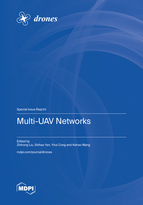Adjustable Fully Adaptive Cross-Entropy Algorithms for Task Assignment of Multi-UAVs
Round 1
Reviewer 1 Report
Interesting work presented.
Author Response
Response to Reviewer 1 Comments
No point.
Reviewer 2 Report
Content
· In simulation speed table 4, the speed of UAV (V) is given as 40 m/s. That is near 90 mph (144 km/h). Is this a possible real-world target implementation of this specific type of UAV? Or should it be 4 m/s?
· Figure 1 depicts a fixed wing aircraft. Is that a generalized diagram or specific to the simulations? This would affect the choice of agent velocity. A clarifying statement underlying choice of UAV is required.
· Is Dmax : The max flying distance (Table 1 and 4) limited by the simulation area size, the assumed battery capacity or aircraft or range of network connection?
· Table 2 shows Re which denotes the resources consumed by different UAV, correct? What does the word (Units) denote here?
· The authors examined several cases they mention the number of targets they use. For example, Case 4 uses 10 targets. However how many UAV agents of Type A, B and C are used for each case? Is it a fixed number across all cases? If yes, have the authors examined cases where they use a different number of agents? It seems like Nb (Number of bases) correlates in some way to the number of agents used?
· A section or subsection describing future research directions can be added after the analysis section. (This is briefly addressed in the conclusion section, but a more detailed explanation on other complex dynamic scenarios can be added.)
Formatting
· Lines 341 and 343: the word Table seems to have been repeated 2 times
· On Page 16 (line 323, 324) and everywhere else: The current method of “Re” and “Ret” is confusing. Consider using subscripts
· Lines 249, 266, 287: there are formatting boxes that need to be removed.
Author Response
Please see the attachment.
Author Response File: ![]() Author Response.docx
Author Response.docx
Reviewer 3 Report
The author proposed three types of tasks: classification, attack, and verification of tasks and split these tasks into independent & continuous, correlative and ongoing tasks. The terms independent, dependent, and continuous need to be elaborated in your problem context.
The author is trying to solve the task precedence problem for continuous and independent tasks. When there is precedence in tasks, some correlation exists among tasks, which needs clarity.
Consume time need clarity, whether it is the time required to allocate tasks or the time necessary to perform all tasks.
In the numerical simulation, what is the continuous and independent correlative, respectively?
Line 95-99, decomposing the considered problem into two sub-problems is a contribution?
There are two types of tasks (A & K), but what are these?
T is defined as the execution time of tasks, but for which type of task is not defined. The author needs to determine the execution time of tasks for A & K types.
The author needs to check the formatting, there are void spaces, and at lines 240, 266 & 287, etc., there are small square boxes.
Author Response
Please see the attachment.
Author Response File: ![]() Author Response.docx
Author Response.docx






